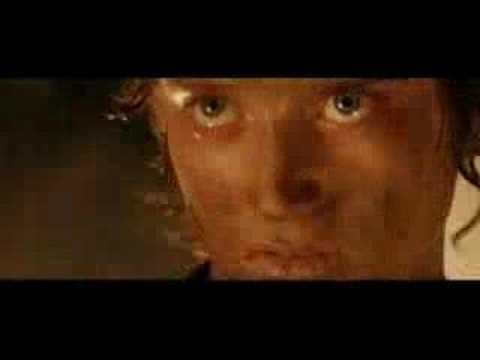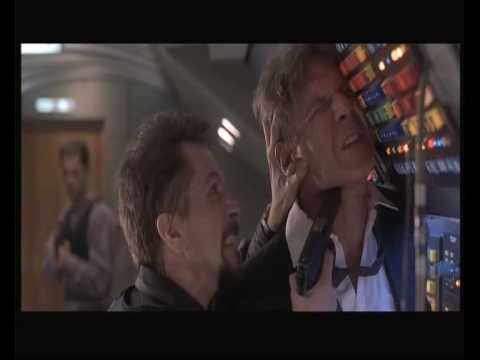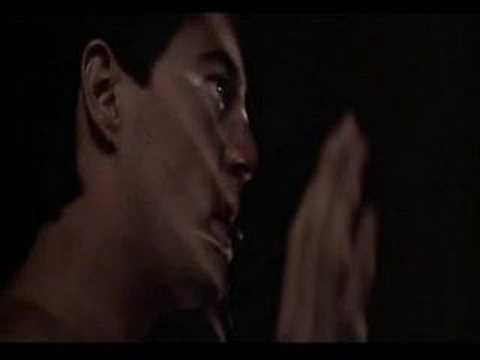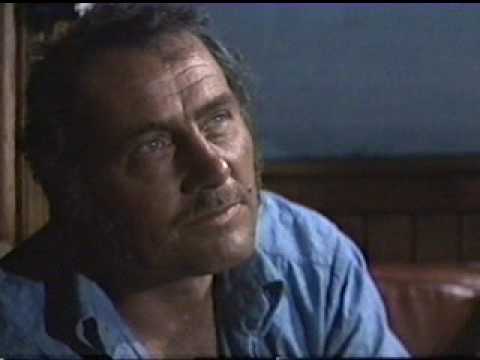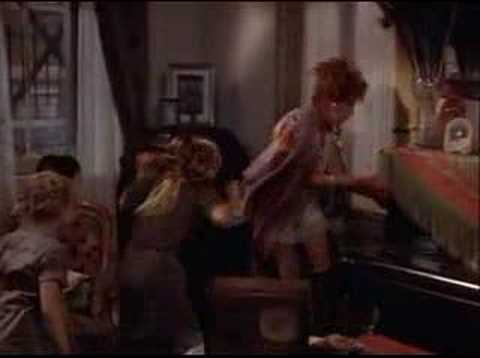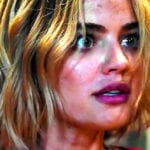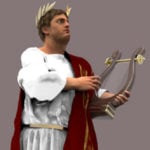He’s as effective in the third film as McKellen is in the first. As Samwise Gamgee, Astin makes you care for his and Frodo’s well being throughout the film. When the strength of the film causes the audience to despair right at the end, and several times before, Astin’s strength keeps it holding on just like Frodo. He’s the only character with the honesty to be able to take the Ring and then give it right back. He hits all the right notes of heroism, dejection, hope, fear, courage, and he does it with such richness, some critics have conjectured a bit of homosexuality between him and Frodo (not true).
An actor of diverse roles, and he certainly deserved a nomination for his performance as Dracula. He disappears into every character, and his work as the villain Ivan Korshunov is among his very best. It isn’t easy being a formidable villain to Harrison Ford’s hero, but Oldman pulls it off. He truly makes you hate him and want to see Ford take him out, but the real merit of his characterization is in the complicated politics motivating him. He isn’t hijacking Air Force One because he hates the President. He’s hijacking it to free a political ally and terrorist. The scene in which Oldman interrogates, beats up, and attempts to coerce Ford into freeing the rogue Kazakh politician is one of the great acting duels in film, and Oldman steals the show with his quiet rage.
This 1980s pop icon of film bullydom was unjustly passed over for an Oscar nod at least once. His performances as Biff Tannen in the other two films of the trilogy are perhaps just as good. Wilson is actually a really nice guy, with a wife and children. He based his characterization on all the bullies he ever knew as a kid, and the work shows through very well. Not only is he big and mean, he’s very stupid, and makes for great slapstick when he gets decked. He’s the character the audience remembers when it leaves the theater.
In terms of bravura performances, this one is the wildest. Keaton did a good turn a year later as Batman, and decided to go the opposite way from this performance. He pulls out all the stops as a “freelance bioexorcist.” It’s Keaton’s effortless delivery of a lot of very funny lines that land him a spot on the list. In essence, he IS this film. Every scene he’s in is great because of his flamboyance. Though the film is full of dead people, it isn’t meant to be scary, and Keaton’s humor pushes it into success in grand style.
His performance as Bill Sikes in this musical version of Oliver Twist is, in this lister’s opinion, one of the top five villainous performances in cinematic history. It was Reed’s idea not to sing any songs, although Sikes has at least one song in the stage version of the musical. Reed believed that as soon as he started singing, he would cease to be scary. He is, in truth, terrifying in every scene. It’s his eyes. He looks as if he’s ready – indeed jubilant – to kill everyone he encounters. Even Fagin is scared of him. His pet dog, Bullseye, is so scared that it remains in tow until the end, when Sikes bludgeons Nancy to death. Reed stands up with a look of the seediest, most toxic rage on his face of just about any film villain. Now even Bullseye won’t come near him. He growls, “Bullseye! Bullseye, you come here!” with such violence in his facial expression and body language that the audience is sure he’ll kill everyone he meets from now on.
By far one of the most over-the-top villains in film. The Academy may have passed Hopper over for this role because he was nominated in the same year for his supporting performance in Hoosiers. His performance as Frank Booth may have been deemed a leading role, but Kyle MacLachlan and Isabella Rossellini are billed at the top. Hopper’s performance is beyond belief. His character, Frank Booth, is mentally deranged, sadistic, masochistic, and tortures Rossellini physically, psychologically and emotionally, throughout the film. He puts on a gut-wrenching spectacle and all eyes are drawn to him, whether they like it or not. In the script, the gas he inhales was supposed to be helium. Hopper knew his way around drugs and decided to use amyl nitrate, which is used properly as an angina medication. Hopper actually inhaled it throughout production to get the proper characterization. By the time he’s shot dead, the audience has seen enough to cheer.
This modern-day Captain Ahab is so mesmerizing once he shows up that the viewer no longer pays much attention to Scheider or Dreyfuss, who both put forth fine work in this film. Shaw was thoroughly wasted on beer and whiskey in most of the scenes, but somehow, it made him focus. Quint destroys his radio to keep anyone else from nabbing the shark. He is ready to wreck his boat and kill his crew to get the shark. He tries everything in the book and sings sea shanties the whole time. His USS Indianapolis speech is horror distilled. It efficiently kills the cheerful mood of the men stripping their sleeves and showing their scars. The speech alone would net him a spot on such a list, and it explains to the audience why Quint is so madly devoted to catching and killing the shark. It also foreshadows his death. And for anyone watching the film who does not fear the shark as a realistic predator, this speech makes it real, because it’s 100% true. A masterpiece of characterization.
Burnett is one of the greatest comediennes in film, and she outdid herself in this musical. She plays Miss Hannigan, the evil proprietor of a girls’ boarding school, who treats the girls like garbage, forcing them to clean and clean again, “until the floor looks like the top of the Chrysler Building.” She’s a falling-down drunk, and wears her hair half down her face, her lipstick half up her face, staggering around the building cursing the children. Burnett gives a fine, colorful flair to it all. By the end, she turns good, wishing no harm on a little girl like Annie. Burnett makes it work from beginning to end. By far her best line is three words long, after she walks into a room, hearing the girls at play, “Was that…laughter?” She looks positively offended by the possibility.
If you’ll pardon the pun, Pacino puts on one hell of a bravura show as the ultimate Evil One. This is the most accurate portrayal of Satan in film to date. The various incarnations over the years have painted him as everything from Jason Voorhees to an inane rascal of a trickster. Pacino does it right. The Devil’s the head of a lawfirm. This film is probably quite popular among lawyers. He’s been around for thousands of years, and now he feels it’s time to make the Antichrist and take over everything. Enter “Cool Breeze” Reeves, who actually does himself proud in this one. He’s not bad at all. Pacino, though, steals every scene. He goes down in film history as the Devil of all devils near the end, when Reeves still won’t join the dark side of the force. He still loves his recently deceased wife. Pacino asks him, “Who are you carrying all those bricks for, anyway? GOD?! Is that it?! God?! Well, I’ll tell ya. Lemme give ya a little inside information about God.” What follows is some of the most awe-inspiring misotheism in cinemas, all the more affecting because, except for the bias involved in what he says, just one side of the story, it’s quite an accurate description of what God has done (if you believe in Him) with mankind, how unfairly mankind has had it, etc. This is Satan as he truly is (if you believe in him), and Pacino does him so proud, the audience is left wondering what the real Satan might think of the performance.
When this lister saw her performance, he made the mistake the rest of the Academy made: he forgot that he was looking at an acting performance. That’s the greatest praise an actor can be worth. Hall’s portrayal of Mrs. Marva Munson is worthy of recognition alongside Brando’s of Vito Corleone, Peck’s of Atticus Finch and any other legendary performances one cares to think of. This lister considers Spencer Tracy the greatest film actor because he consistently did just that: made the audience forget it was watching a performance. The effortlessness involved in pretending to be someone else and speak prescribed lines is the hardest thing for any actor to do. Hall does it just as well, even upstaging Tom Hanks, who is certainly not bad in this film. It’s hard to pin down her best scene, but the last scene, with the sheriff and deputy, discussing the stolen money is perhaps the most charming. She is, indeed, genuine, sincere, honest, and wholly disarming of the audience’s suspension of disbelief, from her first scene to her last. This is one very rare time when the lister believes that not only should she have been nominated for Best Supporting Actress, she should have won.
